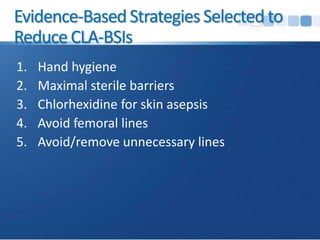Central venous catheters (CVCs) are intravenous devices used for patients with difficult vascular access and for administering medications, monitoring pressure, and providing nutrition. They can be categorized into non-tunneled, tunneled, PICC, and implantable ports, each with specific features and indications. Complications such as infections and pneumothorax are significant concerns, with various strategies recommended to minimize these risks.















































